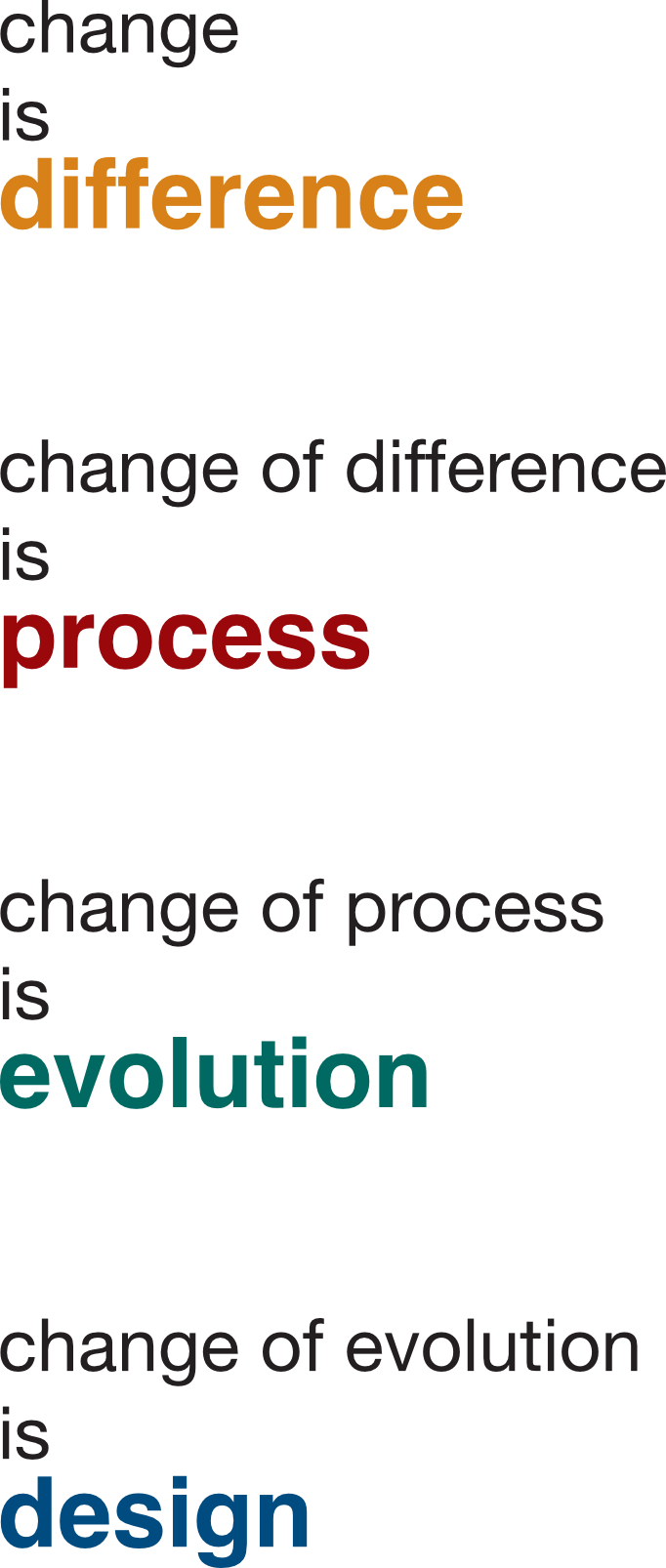change
it's what happens
You cannot unlight a match
– Generations of Fire Starters
The only constant in life Is change.
– Heraclitus
We experience many different kinds of change in our lifetimes. We experience natural changes like growing older. We experience violent change like war and unexpected change like weather, earthquakes, and fire. These kinds of change are consequential. Other types of change, like intentional change, may or may not be as consequential as often but require our serious attention.
Street protests or political sloganeering calling for change are emotionally resonant with people but unclear in meaning and deep purpose. General statements concerning change are even less clear: “we need change”, “the world is changing”, “I need to change”, “change is inevitable”, “ there is too much change”, “things have changed”, “I had a change of heart”, “I changed my mind”, “I need a change of attitude”, “that’s a positive change”, etcetera.
Intentional change in social systems comes through human agency — creating change on behalf of others including self. Leaders, decision-makers, influencers, and especially designers are all agency roles in change processes.
Different types of change experienced regularly are nearly countless. In order to gain an instrumental foothold in the domains of change, it is helpful to frame domains of change using characterizations of cause in play concerning change.
From the AI (artificial intelligence) domains comes the idea of technological agency including ‘superagency’ [https://www.mckinsey.com/capabilities/mckinsey-digital/our-insights/ai-in-action/superagency-the-transformative-potential-of-ai] — AI controlled change.
Less overtly technological forms of change, that are still scientized, have become more common. For example ‘nudging’ people to change without their conscious cooperation is based on social science. Behavioral science is often used by social designers to control people’s behaviors to align with a political or commercial agent’s desires — behavioral change [https://en.wikipedia.org/wiki/Stanford_Behavior_Design_Lab ].
Today there is a very aggressive form of change reemerging in the United States [https://www.govexec.com/management/2024/11/trump-vows-dismantle-federal-bureaucracy-and-restructure-agencies-new-musk-led-commission/400998/print/ ]— vigilante change.
Vigilantism is the act of preventing, investigating, and punishing perceived offenses and crimes without legal authority. A vigilante is a person who practices or partakes in vigilantism or undertakes public safety and retributive justice without commission.
Wikipedia
Change is a constant in life in all the varieties we experience yet we have limited understanding of its nature and control. What can be said about the nature of change conceptually and what can be said about it instrumentally? How does change that is desired — desirable change — get achieved?
Change is a term used repeatedly in modern discourses. Nearly as much as the terms ‘data’ or ‘AI’ are used — with equal inconsistency of meaning. Most often change is meant to describe or explain something unfolding in the ‘real’ world. Although describing and explaining reality through the lens of change is necessary it is insufficient when preparing for action.
‘Change agent’ is a popular idea that gets used in relationship to initiating and guiding change in social systems and organizations. Who are change agents and how do they relate to change dynamics? Who ought to be change agents? Are they change professionals with expertise in change dynamics or just professionals or decision-makers who have decided to change things?
What does the idea of change mean for change agents when they making or creating reality? What is change when used in conjunction with purpose i.e. designing? What does the term change mean abstractly, concretely, and conjunctively? There are many candidates for consideration but for now, we will focus on designed change. Change as a verb, particularly intentional change, is complex and dynamic, which is why its true nature is glossed so often. It changes the whole mood for those supporting change when it is taken seriously – not just what is changed but the approach to change itself.
Let’s begin by looking at change as a hierarchy:
Change is a constant in life in all its varieties. What can be said about the nature of change abstractly and what can be said about it instrumentally — change that is desired? For example, desired systems change can be framed by intension (aim) and intention (outcome):
Another good place to start an investigation into the nature of particular types of change is with a seminal question: “Who gains and who loses in any particular change action?” Such an accounting can be made transparent through a ‘value distribution assessment’ [https://www.academia.edu/30138707/Value_Distribution_Assessment] for example.
If change is to be a consequence of pro-action how is it possible to secure desired change?
It ought to be remembered that there is nothing more difficult to take in hand, more perilous to conduct, or more uncertain in its success, than to take the lead in the introduction of a new order of things. Because the innovator has for enemies all those who have done well under the old conditions, and lukewarm defenders in those who may do well under the new. This coolness arises partly from fear of the opponents, who have the laws on their side, and partly from the incredulity of men, who do not readily believe in new things until they have had a long experience of them.
– Niccolò Machiavelli, The Prince
What needs to be known about intentional change for it to be managed by change professionals — change agents? This might involve looking at ‘negotiable change’ and ‘non-negotiable’ change as well as who benefits and who loses in either case. Who voluntarily lets go of the existing order of things and celebrates the new opportunities brought by an intentional change. Who is forced to involuntarily let go of the existing order of things and is left to grieve over what has been lost with no promise of gain but only a possibility:







